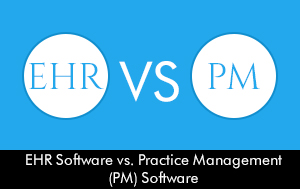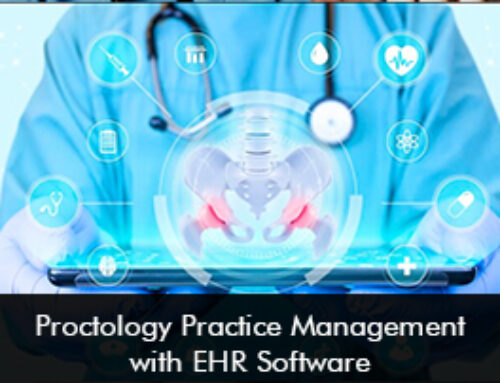With the technological advancement in healthcare technology, EHR software vendors have started offering Practice Management (PM) software to help medical practices and healthcare organizations in managing the administrative side of their practices. The Electronic Medical Records (EMR) software manages the clinical side of the healthcare hospitals and practices.
Some very common Practice Management (PM) software features include Patient Scheduling, Medical Billing, Patient Portal, e-Prescribing (e-Rx), patient check-in, financial reporting and benchmarking, etc. Although many practices work quite well without a fully integrated Practice Management (PM) system, there are a number of convincing reasons why a practice must consider a fully-integrated EMR and Practice Management solution.
Difference between EMR Software and Practice Management PM Software
Practices and physicians often get confused about the differences between Electronic Health Records (EHR) software and Practice Management (PM) software. The difference between these software rests in the type of information they manage.
An EHR software system manages clinical information relating to the patient’s healthcare and treatment. EMR Software handles record-keeping for clinical care and help take care of the medication, diagnosis, and treatment of the patients
Practice Management Software, on the other hand, handle all the administrative data and information that any healthcare practice would require. While EMR Software take care of the clinical side of the practice, PM Software handle the administrative side.
3 Top Features to look for in a PM Software
If you are looking for a Practice Management Software for your medical practice, then you should make sure that the PM system has the following key features:
EMR & Practice Management Software Integration
The most persuasive reason for choosing a fully integrated Practice Management system involves the removal of barriers to data sharing and analysis within a practice.
An integrated EHR solution allows clinical and practices data to be managed by administrators and clinical staff in a seamless manner, thus offering the ability to monitor and analyze performance across the entire organization. The capability to eliminate data tower that occurs between the administrative and clinical side of the practice is even more valued to practices with complicated organizational structures or operate from multiple places.
Revenue Cycle Management (RCM) Software
Recent surveys show that healthcare practices on an integrated EHR, Practice Management (PM), and RCM software platform collected 29% more on billed charges as compared to nonintegrated Practice Management and RCM software.
Revenue Cycle Management (RCM) software tracks revenue streams within a practice and offers the ability to manage revenue flows by avoiding potential revenue drains by verifying patient insurance eligibility and claims tracking.
Financial & Clinical Dashboards
Practice Management (PM) Software must offer users the ability to analyze the performance of the practice through easy to use and informative real-time dashboards. Many Practice Management software in the market today allow users to view and generate reports regarding clinical and financial analytics.
The easy to use dashboard allows individuals who may not have a deep background in analytics, management or finance to conduct analyses and understand them easily.
The value of Practice Management software in helping practices address the routine operations of the practice rests in its capability to reduce time, human or financial resources needed to run the business side of practice efficiently. It is also important to understand that the gap between Practice Management software and EMR Software Systems now is not significant anymore, given the importance placed on the coordination of clinical and business-side data and information. Practices must take Practice Management (PM) software as a way to enhance EHR software and vice versa.







